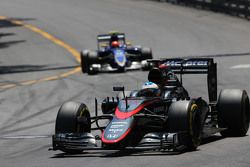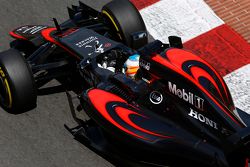Tech analysis: The power behind F1’s fuel war
Nothing has highlighted the importance of what goes into the engine in Formula 1 this year than the numerous technical directives relating to fuel flow and pressure.

Photo by: XPB Images













But while the issue has grabbed the headlines, behind the scenes tremendous work has been going on from F1’s fuel suppliers to integrate their efforts with the power units like never before.
In fact, according to Philippe Girard, a scientific delegate for the Total group, never have fuel suppliers and the car makers worked so closely together to try to deliver performance.
It is a world away from how development went in F1’s V8 era.
“The V8s were in a completely frozen configuration,” he told Motorsport.com. “We had come to a point where we almost didn’t gain any more power with fuel.
“But last year, with the new regulations, we gained 4% more power, which makes 22-23 kilowatts – almost 30 horsepower.”
Fuel directly linked to engine power
This performance gain was partly linked to fuel – even though manufacturers and suppliers still like to keep details about how big a role they played a secret.
Last year it was widely known that Mercedes partner Petronas had worked on perfecting the fuel for the German car manufacturer from the moment the power unit was conceived.
That early effort contributed in part to a power advantage of more than 50bhp over its rivals throughout last year.
The role of the fuel was clear too when it came to working out where the performance difference came between the Mercedes works team supplied with Petronas’ best products and other customer teams using products that were not so well optimised.
Fuel a talking point once more
Unlike V8s, V6s make fossil fuels prominent – and mean F1 has become a valuable technological training ground for petrol companies.
The new internal combustion engines use direct injection, which means that the fuel goes directly to the combustion chamber, like a normal diesel engine. As a consequence, the fuel needs to vaporise quickly in order to get the most out of it.
“Turbo engines work like diesels, with a big air excess,” Girard explained. “We try to make the best use of the developed energy, while with the turbo from the 80’s, we would just put as much fuel and air as possible.”
In other words, the problem posed by V6s is not pushing them to the limit but getting as much performance as possible out of a limited amount of fuel - knowing that cars are limited to 100 kilograms of fuel per race and that drivers can rely on two electric systems of energy recovery.
Cooling a factor too
The second problem posed by V6 engines is the management of cooling systems.
Girard added: “The naturally-aspirated V8s were doing 18,000 RPM, which is 300 revs per second. The V6s are turbo engines, so they are supercharged.
“When the intake air is hot, you try and cool it down as much as possible, but it is a lot hotter than with V8s.”
Then you also have to take in to account the energy delivered by energy recovery systems.
Furthermore, unlike the radical rules that fuel has to follow, lubricants are a lot freer. The aim is to reduce contact between the various mechanical parts of the engine, notably during fuel combustion.
“We put some everywhere with mechanical contact and with potentially high pressure.”
Different components are therefore used: for the engine, the gearbox and hydraulics.
“This is restricting but important, it enables us to be a good partner, developing the fuel. It would be annoying if we had nothing more to do!
“We’re opening the field of possibilities, we’re finding solutions. Mercedes has done it very well.”
It is clear that the battle between fuel companies is as intense as that between the engine makers themselves.
Thomas Baron/Guillaume Navarro
Be part of Motorsport community
Join the conversationShare Or Save This Story
Subscribe and access Motorsport.com with your ad-blocker.
From Formula 1 to MotoGP we report straight from the paddock because we love our sport, just like you. In order to keep delivering our expert journalism, our website uses advertising. Still, we want to give you the opportunity to enjoy an ad-free and tracker-free website and to continue using your adblocker.











Top Comments